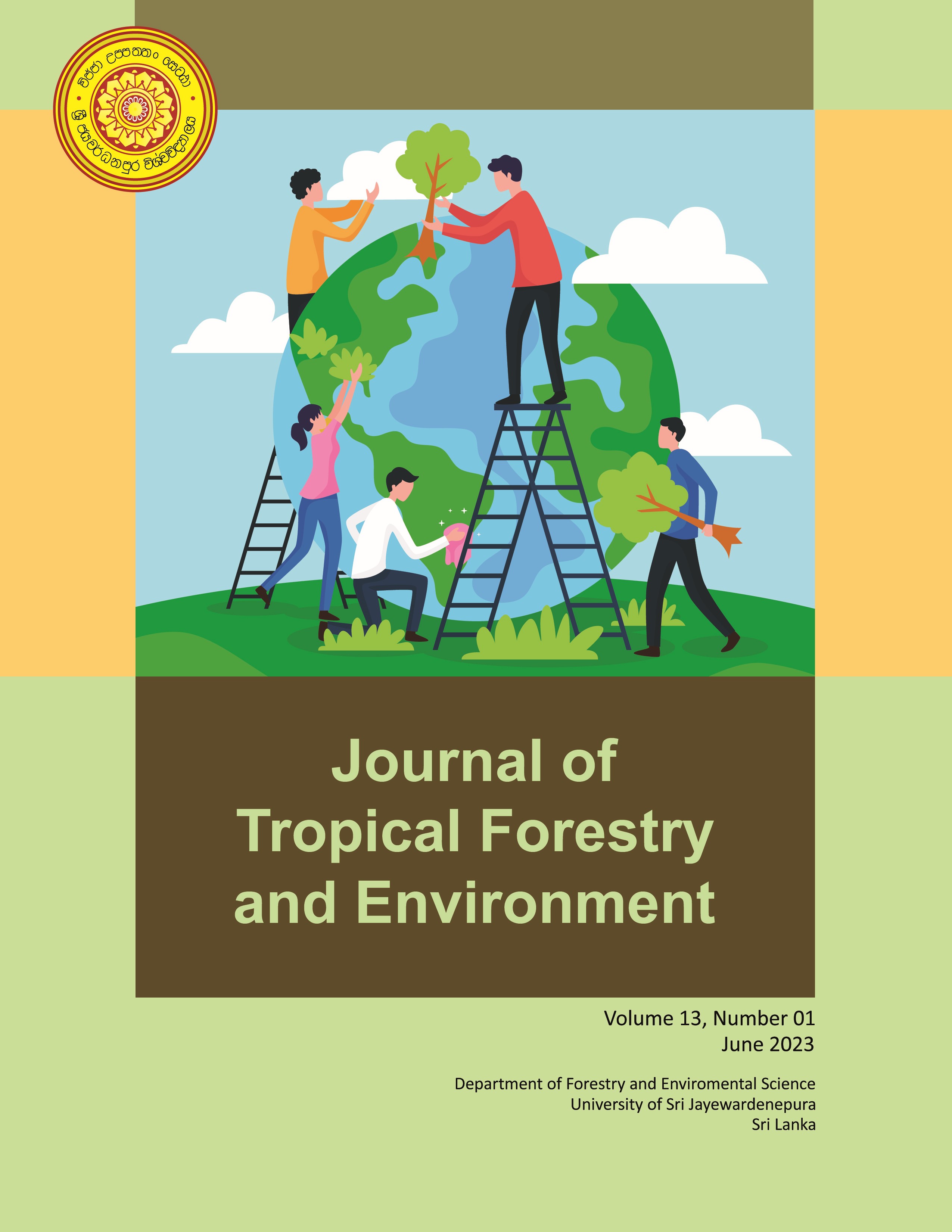Impact of community forestry program on rural livelihood strategy under socioeconomic transition: A case study in the Central Dry Zone of Myanmar
DOI:
https://doi.org/10.31357/jtfe.v13i01.6305Abstract
Livelihood diversification is a common strategy to adjust to economic and environmental shocks and reduce poverty. This paper compared the livelihood strategies of community forest user group households with non-community forest households as a case study in the central dry zone in Myanmar. Employing data from field surveys with a sample size of 189 households through stratified sampling, scores were given for five livelihood assets with 18 decision variables, and sectoral classification of livelihood diversification was applied. Results suggested that the community forestry program ensured the secure use of local people's land rights and significantly contributed to the daily needs of community forest user group households. In addition, the community forestry program provided working capital to its members through working on natural assets such as agroforestry, livestock, and off-farm (jaggery). Social, natural, and human assets play an essential role in the diversification patterns of local people under rural transition. This analysis showed that the community forest user group households faced three entry barriers which are weakness in social networking, high mobility of its members, and an insecure financial support system to move to Community Forestry based small business.
Downloads
Published
How to Cite
Issue
Section
License
The publisher retain the copyrights of contents published, and all open access articles are distributed under the terms of the Creative Commons Attribution-Noncommercial-No Derivative Works 3.0 Unported License[U1], which permits unrestricted use, distribution and reproduction in any medium, provided that the original work is properly cited.
You can download the Legal Code for this License at: http://creativecommons.org/licenses/by-nc-nd/3.0/legalcode


